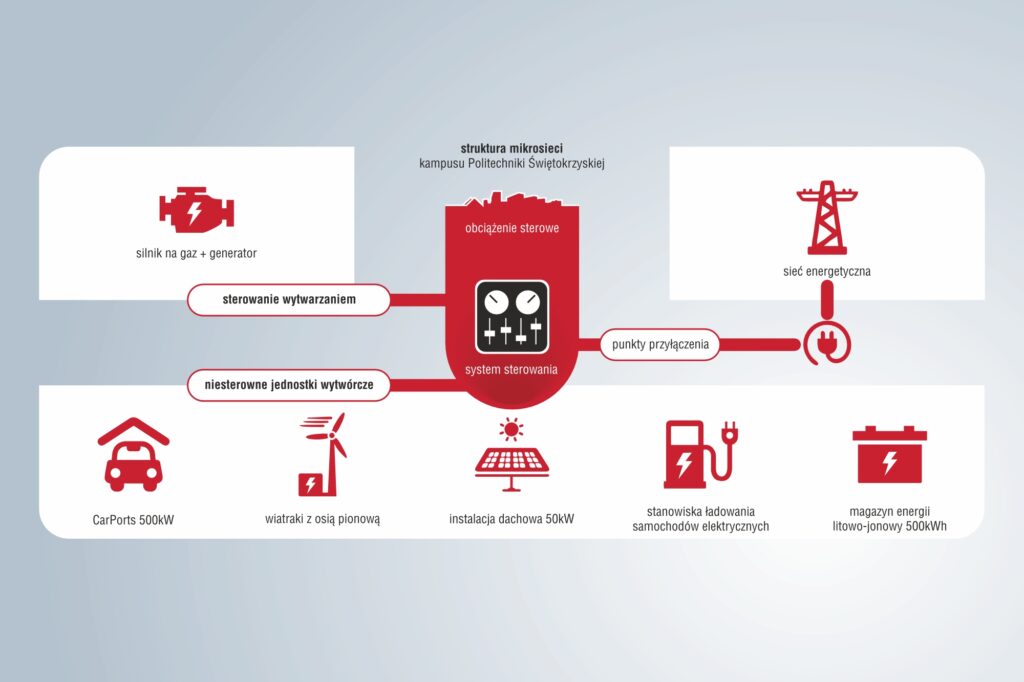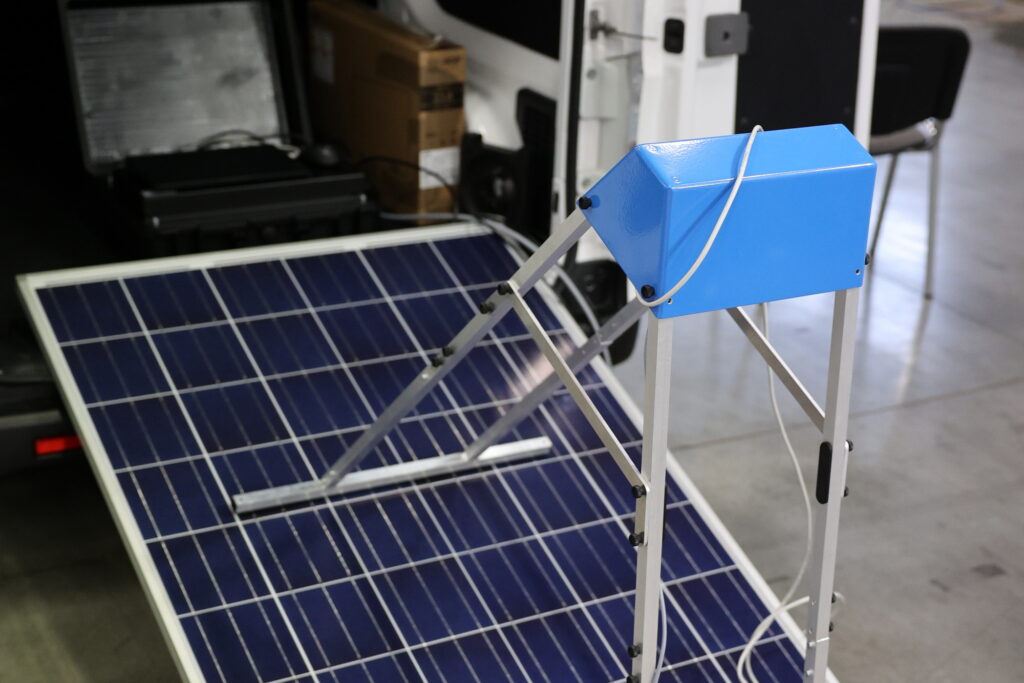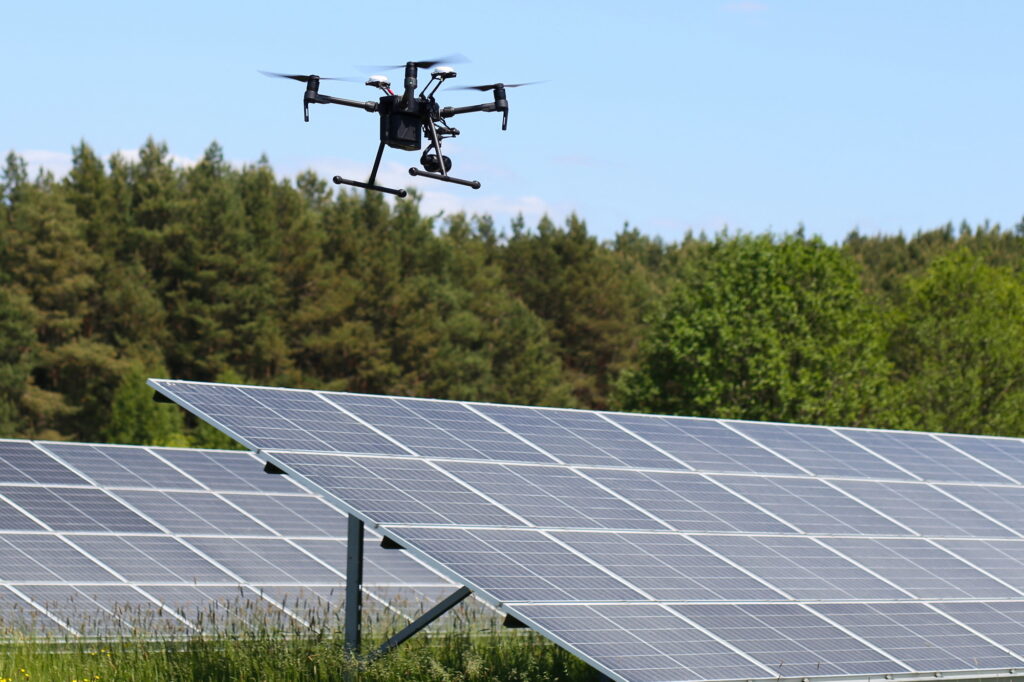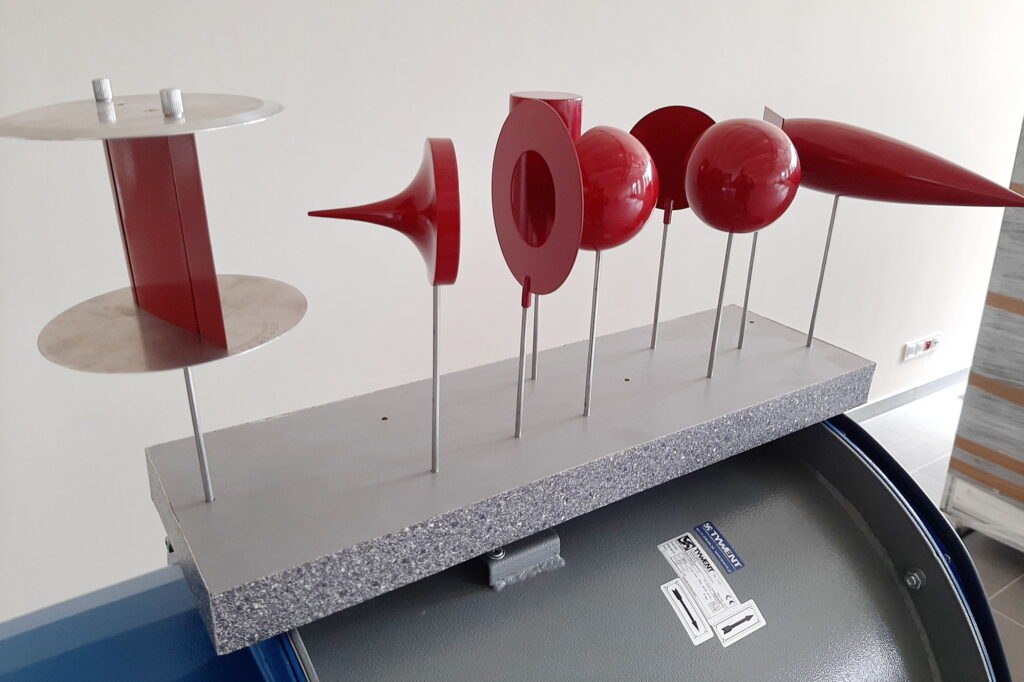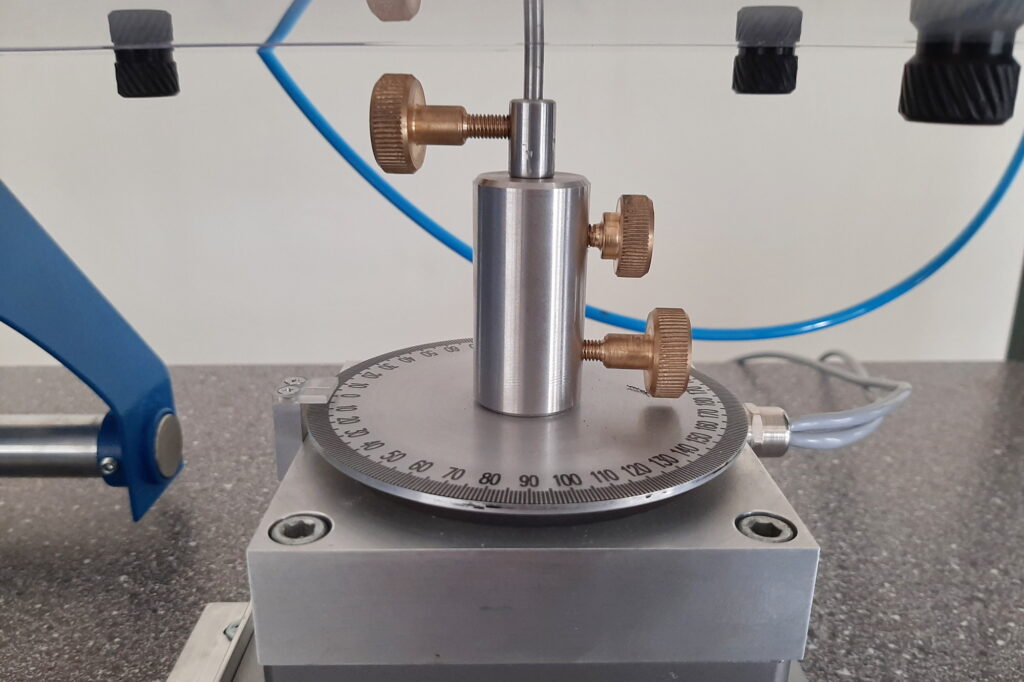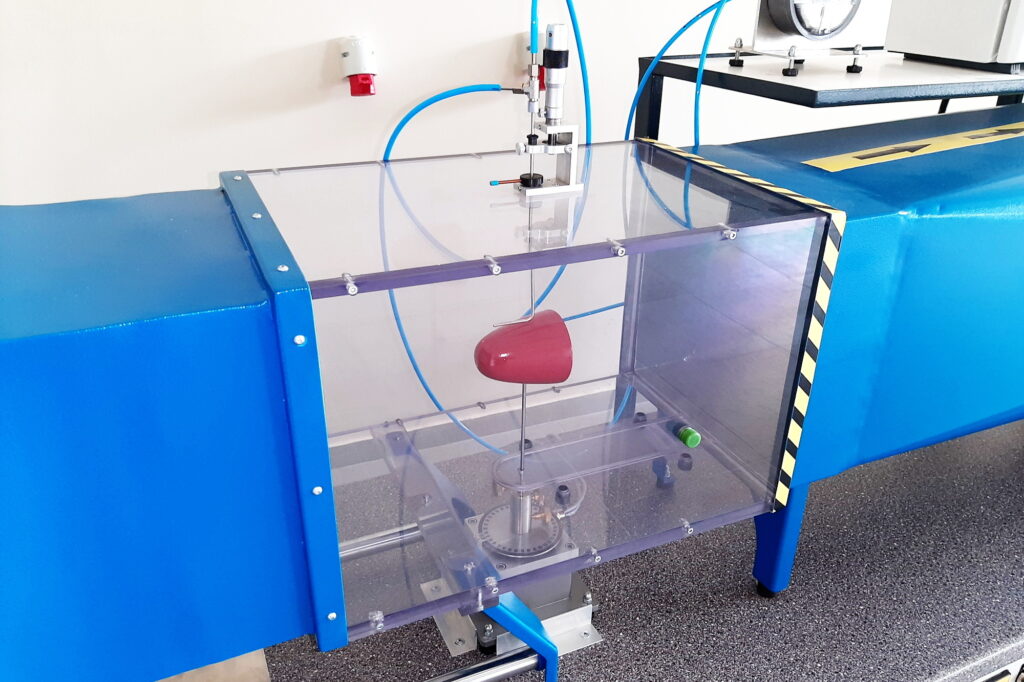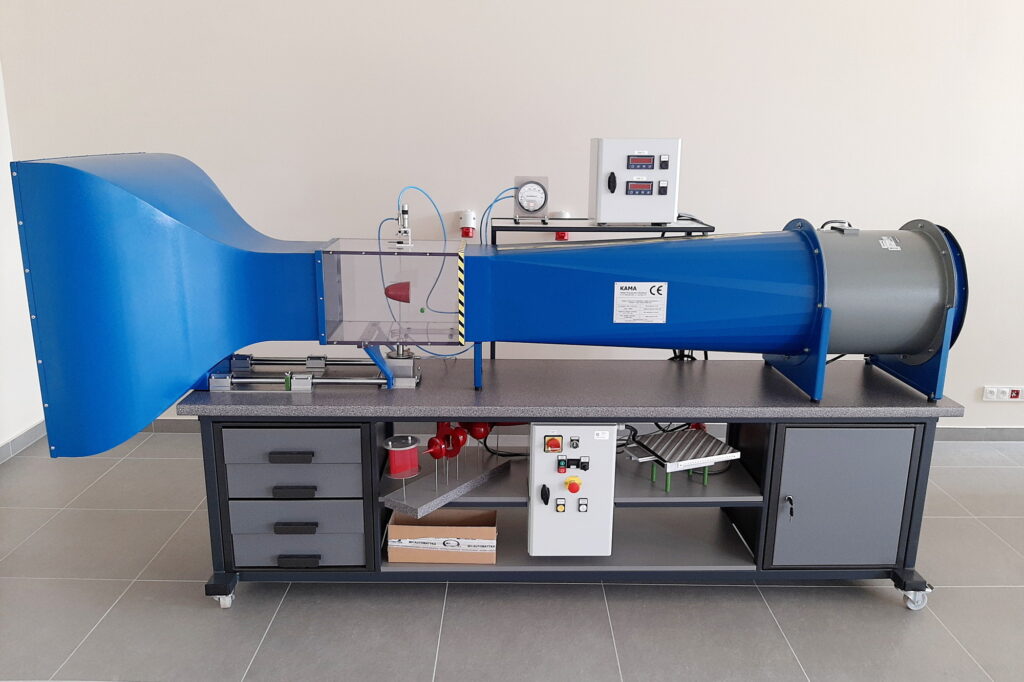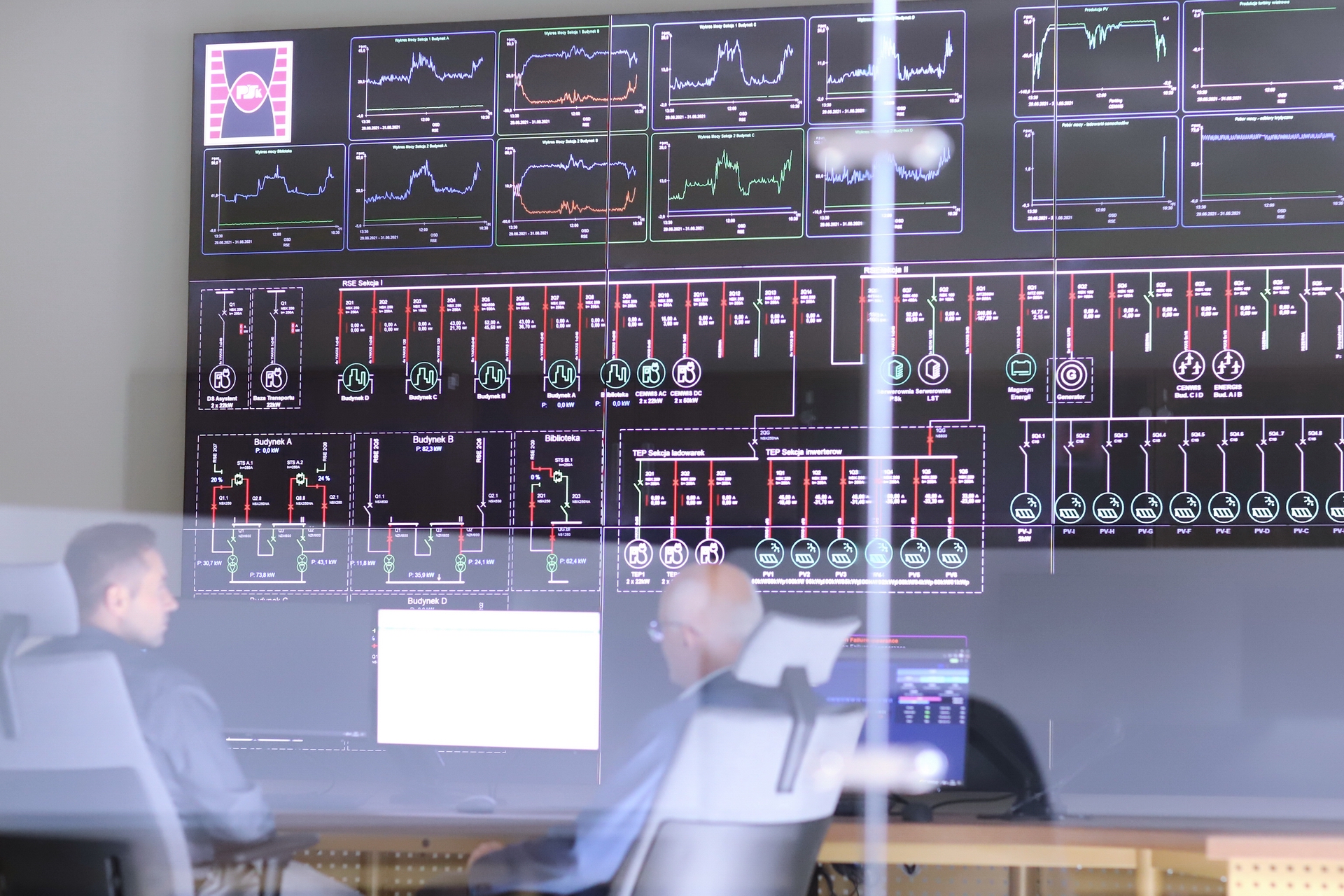
Industrial Laboratory for Low-emission and Renewable Energy Sources
The main research goals of the Laboratory
- Research and measurement:
– Mechanical and electrical parameters of photovoltaic modules on the laboratory scale or at the customer’s site
– Power balance in power microgrid nodes.
– Battery charging station parameters.
– Functionality of electric vehicles for defined needs.
– Aerodynamic drag coefficient of objects in the wind tunnel. - Completion of devices powered by renewable energy sources and their parameters for specific energy demand profiles.
- Development of operating scenarios for the power microgrid for given expectations.
- Operational analysis of a power microgrid using digital twins.
- Evaluation of the ecological effect of the planned or constructed microgrid.
- Managing the quality of the operation of industrial plants and energy cooperatives in terms of energy efficiency and reliability.
Laboratory Team
- Prof. Artur Bartosik, Head of Laboratory
- Prof. Sławomir Karyś
- Prof. Marek Pawełczyk
- Prof. Maria Krechowicz
- Damian Krzesimowski
- M.Sc. Artur Pawelec
- M.Sc. Aleksandra Pyk
- M.Sc. Dominik Zbróg
Scope of Research and Development Work
Modelling and management of a power microgrid powered by low-emission and renewable energy sources
- Modelling of the electric power balance in power nodes containing defined sources, storage tanks, and loads, along with elements of forecasting energy production from RES.
- Management of electricity supply and demand within the microgrid in relation to the energy price exchange market on the electricity exchange market.
- The use of machine learning to forecast profit and the amount of energy produced by photovoltaic and wind farms.
- Local balancing of active and reactive power in a microgrid, which includes a stationary or mobile energy storage facility.
- Monitoring of energy flow in a microgrid with power balancing elements using a digital twin.
- Simulation of the management of renewable energy
- Forecasting energy production and consumption based on short-term meteorological forecasts from terrestrial and satellite systems.
- Operational analysis of the functionality of the microgrid.
- Forecasting parameters and prices of battery charging services in electric vehicles.
Tests of photovoltaic modules in laboratory or real scale (on campus or at the customer's site)
Tests on campus or at the customer’s site:
- Testing of photovoltaic modules to determine current-voltage characteristics, including the use of a solar spectrum simulator.
- Validation of the operating status of photovoltaic modules using thermal imaging and electroluminescence.
- Detection of defects in photovoltaic modules using an unmanned aircraft.
Electric Vehicles
- Research aimed at determining the characteristics of electricity demand by car in real conditions, e., at the customer’s site (the university has an electric delivery and passenger vehicle).
- Assessment of the ecological effect of using an electric vehicle at the client’s site.
- Development of guidelines for the implementation of electromobility at the client
Research in a Wind Tunnel
- Maximum dimensions of the tested objects (0.1 x 0.1 x 0.1) m.
- Measurement of the longitudinal and transverse forces acting on the object.
- Determining the velocity and pressure profiles around an object.
- Measurement of the aerodynamic drag coefficient.
- Determination of the critical angle of attack and the lift force.
- Determining the impact of the materials and coatings on the aerodynamic properties of the object.
- Possibility of personalised research targeted to the customer’s needs.
Laboratory equipment and apparatus
Electricity microgrid
- Steering Centre for Monitoring and Management of the Production, Distribution, and Storage of Energy from Renewable and Low Emission Sources.
- Server room for acquiring measurement data on energy production, flow and storage.
- Infrastructure integrating energy consumption in four teaching buildings, a library, and two server rooms of the Kielce University of Technology.
- Unstable sources in the form of a photovoltaic installation with a capacity of 500 kW located on carports and 20 kW located on the roof of a building.
- Unstable sources in the form of vertical-axis wind turbines with a total power of 24 kW installed in university buildings.
- stable source in the form of a power generator powered by natural gas with a capacity of 100 kW.
- Stationary energy storage, which uses lithium-ion batteries, with a power of 500 kW and energy capacity of 400 kWh, and mobile energy storage – three electric vehicles.
- Plug-in electric vehicle charging points: DC 50kW (2 pcs.) AC 22KW (10 pcs.).
- Software PVSol for designing photovoltaic installations.
- Software ETAP for designing a microgrid.
Mobile Laboratory for Measuring and Testing Photovoltaic Modules
The Led Sun Simulator 4.0 mobile laboratory can measure electrical parameters and perform thermal imaging and electroluminescence tests of photovoltaic modules. The Led Sun Simulator 4.0 mobile laboratory allows you to perform tests according to the TUV IEC 60904-9 certification, class A+A+A+. The mobile laboratory includes the following:
- Solar simulator with full spectrum LED flasher for mono- or multicrystalline modules, PERC and thin-film modules with a radiation intensity range of 200 to 1200 W/m2.
- Thermal
Thanks to the infrastructure installed on the roof of the building, it is possible to test the module parameters in real conditions and perform comparative tests, as well as analyse the efficiency of PV modules in any geographical location.
DJI MATRICE 200 V2 drone
For detecting defects using a ZENMUSE XT 2 thermal imaging camera (FLIR):
- TimeSync system – increased geotagging precision.
- FPV camera.
- Thermal imaging camera with a thermal imaging sensor with a resolution of 640×512 and a refresh rate of 30 Hz.
- Digital zoom: 640×512: 1x, 2x, 4x, 8x.
- Pixel size: 17 μm.
- Range of detected temperatures (high gain): 640×512: -25°C do 135°C.
- Range of detected temperatures (low gain): od -40° do 550°C.
- Photo format: JPEG, TIFF, R-JPEG.
- Video format: 8 bit: MOV, MP4; 14 bit: TIFF Sequence.
Aerodynamic tunnel
- Dimensions of the measuring section: width, height, length: (0.3 x 0.3 x 0.42) m.
- Tunnel flow speed: (3.2–28) m/s.
- Ability to adjust the angle of attack: 0-150o.
- Measurement accuracy of the lift force: less than or equal to +/- 4N.
- Transparent and closed measuring section.
- Fan motor with adjustable speed.
- Stabilisation of the air
- Electronic sensor for measuring two components of flow force.
- Surface roughness meter.
- Available research objects: sphere, hemisphere, disc, ring, square, cylinder, paraboloid, streamlined object, concave object, and ribbed object.
- Possibility of designing and constructing any 3D research object made of plastics, ceramics, or metal alloys.
Offer of cooperation with industry
- Research and development services provided to the industry may be performed individually or in package form.
- The service offered by our Laboratory is addressed to entities that already operate or plan to launch extensive power structures.
- Services related to PV modules are addressed to investors, installers, professional sellers of photovoltaic installation components, and users of PV modules.
- Services related to object aerodynamic research are offered to entities that design or produce elements or devices subject to aerodynamic pressure.
- Research and implementation works are carried out by the team of the Department of Production Engineering, Faculty of Management and Computer Modelling, and Department of Energy, Power Electronics and Electric Machines. The team includes scientists and experts, authors of expert opinions and scientific studies commissioned by business entities, co-authors of patents, and authors of scientific studies.
Kontakt
Kielce University of Technology
Faculty of Management and Computer Modelling
Department of Production Engineering
Industrial Laboratory for Low-emission and Renewable Energy Sources
al. Tysiąclecia Państwa Polskiego 7
25-314 Kielce
Poland
The laboratory was established as a result of the project CENWIS – Scientific and Implementation Center for Smart Specializations of the Świętokrzyskie Region, Agreement No. RPSW.01.01.00-26-0001/17-00, co-financed by the European Regional Development Funds under the Regional Operational Program of the Świętokrzyskie Voivodeship for 2014 ÷2020. Priority Axis 1: Innovation and Science, Measure 1.1. Support for R&D infrastructure.
Sekretariat
+48 41 34 24 282
skwzimk@tu.kielce.pl
Artur Bartosik
+48 783 230 613
artur.bartosik@tu.kielce.pl
Artur Pawelec
+48 602 275 382
apawelec@tu.kielce.pl
Dominik Zbróg
+48 783 230 245
dzbrog@tu.kielce.pl
